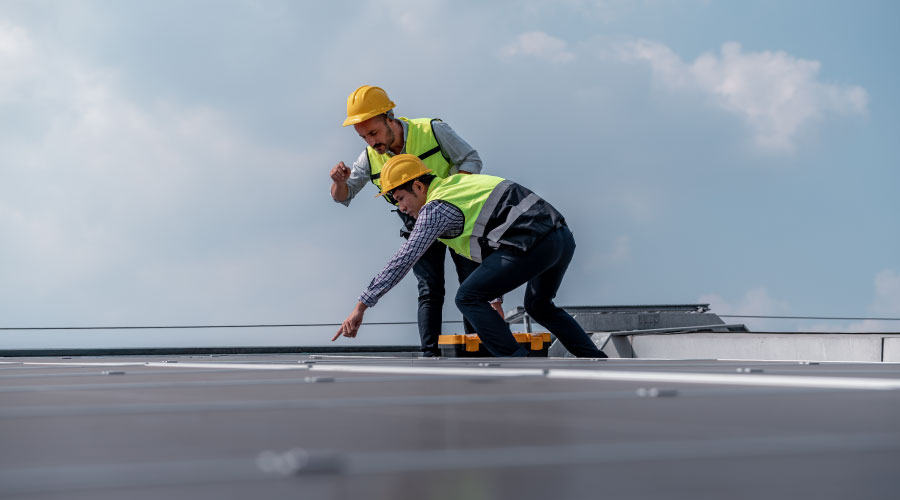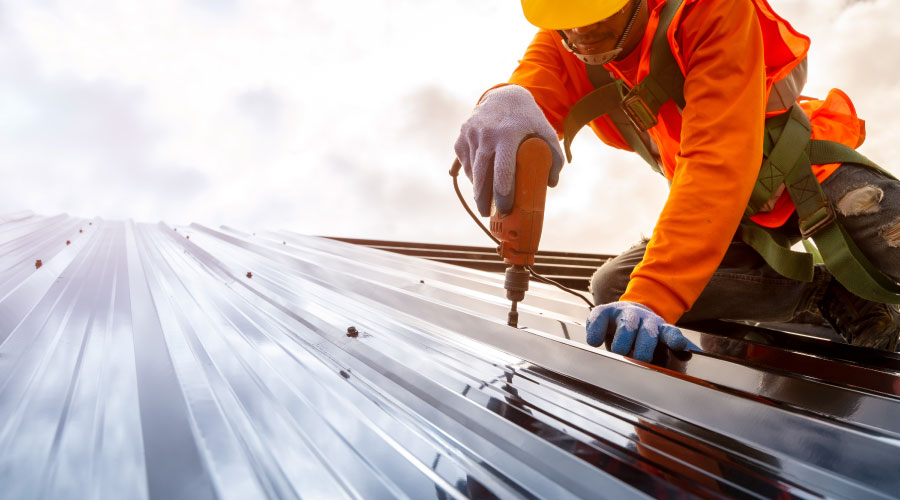Metal Roofs Much Improved From Earlier Generations
Today's metal roofs are a far cry from those that were common in the late 1960s, when Galvalume, or aluminum-zinc coated sheet steel, was introduced, says Dave Evers, vice president of research and development with Butler Manufacturing. Earlier galvanized steel roofs had expected life spans of about 10 years, Evers says.
Along with a longer life span, maintaining a properly installed metal roof generally is fairly simple, and consists of removing any debris or standing water that finds its way to the roof. "You don't have to go up with a bucket of tar or solvents," says Evers.
According to various sources, annual maintenance costs for most non-metal commercial roofing systems run between $.05 to $.10 per square foot. The maintenance costs for metal roofing systems typically run between $.01 and $.02 per square foot. For a 10,000-square-foot roof, that difference can save the building owner between $8,000 and $16,000 over twenty years. "It's another huge advantage for metal," Haddock says. "You can install it and forget about it."
Environmental Responsibility
The longer life span of metal roof and wall systems not only saves building owners the cost and hassles of more frequent roof replacements, it also reduces the environmental impact. It takes much less of an environmental toll to extract, process, manufacture, deliver, install, maintain and replace a roof every, say, 50 years, rather than every 15 years.
Metal building products also score high when it comes to recycling. "Metal is made from recycled material and, at the end of its useful life, can be recycled again," says Jim Bush, vice president of sales with ATAS International.
Indeed, copper and aluminum sheets often are 95 percent recycled. While the percentage of recycled material in steel and zinc sheets may be a little less, it's typically at least one-third, Anderson says.
Metal building products also can be recycled at the end of their lives into the same product, Bush says. In contrast, many other materials, when recycled, are converted to different products that may be of a lesser quality. An example is premium writing paper, which often is recycled into cardboard.
Finally, metal can be recycled multiple times. "You don't lose quality by going through the recycling process more than once," Kriner says.
A metal roofing system, because it's typically lightweight, often can be placed over an existing roof. That can postpone — sometimes indefinitely — the costs and environmental implications of removing and disposing of an existing roof, Bush says.
Metal roofs, by reflecting the sun's energy away from a building, can reduce the amount of energy needed to cool it. According to The Metal Initiative, the reflectance values of cool metal roofs can exceed 70 percent. What's more, a study by Oak Ridge National Laboratory found that painted metal roofs retain 95 percent of their reflectance value over time. By reflecting the sun's energy away from a facility, metal roofs can cut the heat gain in buildings by up to 30 percent, Kriner says.
Another study by Oak Ridge National Laboratory found that switching from a black built-up roof to a metal painted roof could cut annual heating and cooling costs in three of four locations — Chicago, Houston and Miami — by between $500 and $1800, assuming a roof size of 10,000 square feet. The only location in which a painted metal roof was slightly less energy efficient? International Falls, Minn., where the average temperature stays below 20 F for nearly half the year.
Contrary to what some may assume, metal roofs don't have to be white to be reflective, Anderson says. With the reflective paint pigments available today, even such colors as green and brown can be reflective.
Metal roofs' longer life spans also make them ideal partners for solar panels, Kriner says. Some solar panel systems will last for 30 years. However, if the roof's life is 20 years, the building owner still will need to remove both the panels and the roof when the roof is at the end of its life. That increases costs and introduces hassles, as it disrupts the power supply.
Related Topics:













